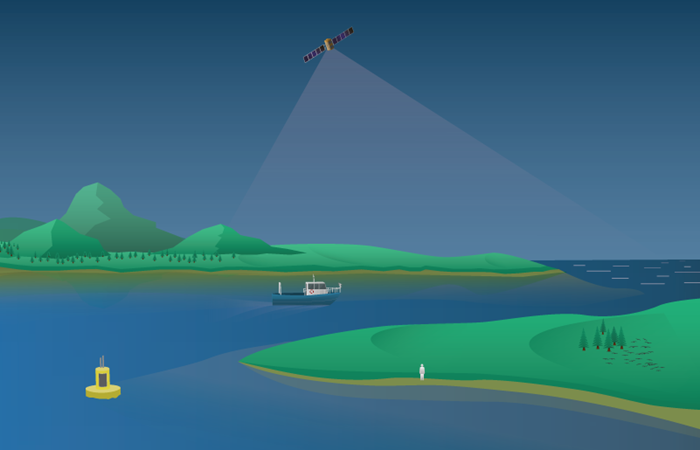Water quality is a key worldwide issue relevant to human consumption, food production, industry, nature and recreation and the European Copernicus programme includes satellite sensors designed to observe water quality, and services to provide data and information to end-users in industry, policy, monitoring agencies and science. However, water quality data production is split across three services, Copernicus Marine, Copernicus Climate Change, and Copernicus Land, with different methods and approaches used and some areas, notably transitional waters, not supported by any service.
The CERTO project (Copernicus Evolution: Research for harmonised Transitional water Observation) aimed to address this lack of harmonisation by undertaking research and development necessary to produce harmonised water quality data from each service and extend Copernicus to the large number of stakeholders operating in transitional waters. CERTO focused on methods to classify waters, using satellite observations, together with the most comprehensive existing in situ data sets and additional data gathering within the project.

CERTO data gathering includes satellie, in situ and autonomous measurements.
Methods were improved to remove the atmospheric signal, particularly problematic in near-coastal and transitional waters, as well as to flag waters where the bottom is visible. CERTO will evaluated optical water quality Indicators, as specified by the broad group of end-users engaged in the project from industry, monitoring agencies and science communities. CERTO investigated cross-cutting Indicators that may be used across coasts, transitional and inland waters including large rivers (monitored through the Water Framework and Marine Strategy Framework Directives). The project contributed to DANUBIUS the European research infrastructure in River-Sea Systems, and international communities such as Group on Earth Observation (GEO) AquaWatch and Blue Planet, the Lagoons for Life initiative as well as supporting the United National Sustainable Development Goals.
The main output of the project is a prototype system that can be “plugged into” the existing Copernicus services, or the developing Data and Information Access Services (DIAS), or popular open-source software used widely by the community (SNAP). CERTO also produced the evidence needed by the “entrusted entities” that run the Copernicus services as to the improvements, potential to increase the user community, possible downstream services and wider impact of the prototype.
CERTO achieved its objectives by uniquely bringing together the leaders of the water quality data
production in the three Copernicus Services, five SMEs involved in research and innovation and downstream water quality services, the Climate-KIC that leverage a pan-European partnership and a community of innovators and entrepreneurs, as well as four research intensive institutes/ universities, together with leaders of end-user relevant communities either in the team or as advisors.